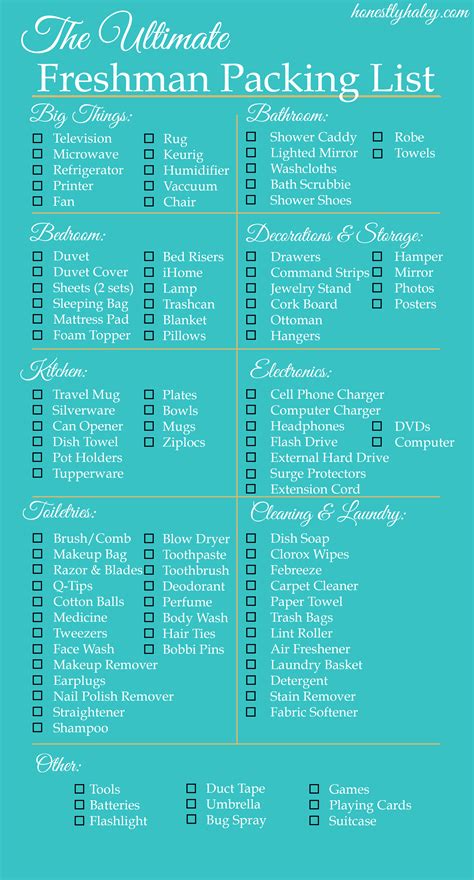Navigating the Maze of College Packing: A Comprehensive Guide

Preparing for the transition to college can be an exciting yet daunting task. Among the many things to consider, packing your belongings is one of the most crucial. To help you navigate this process effortlessly, we’ve compiled a comprehensive guide to assist you in packing efficiently and stress-free.
Step 1: Declutter and Purge
Before you start packing, take the time to declutter and purge your belongings. College dorms are typically space-constrained, so it’s essential to only bring the items you truly need. Start by sorting your belongings into piles: keep, donate, discard. Be ruthless in discarding anything you haven’t used in the past year or so.
Tips:
- Use the “one-year rule”: If you haven’t used an item in the past year, it’s likely you don’t need it.
- Consider donating gently used items to local charities or selling them online for extra cash.
Step 2: Plan and Prioritize
Creating a packing plan will help you stay organized and avoid last-minute stress. Start by making a list of all the belongings you need to bring, including clothing, electronics, bedding, toiletries, and personal items. Then, categorize these items and prioritize what needs to be packed first.
Prioritize Essential Items:
– Clothing for the first week
– Bedding (sheets, comforter, pillows)
– Basic toiletries
– Electronic devices (laptop, charger)
– Important documents (passport, ID card)
Step 3: Gather Packing Materials
Ensure you have all the necessary packing materials, including sturdy boxes, packing tape, bubble wrap, and markers for labeling. It’s also helpful to use clear plastic bags for organizing smaller items.
Cost-Saving Tips:
- Ask friends or family if they have any used packing materials.
- Check with local moving companies or storage facilities for discarded boxes.
- Utilize online marketplaces like Craigslist or Facebook Marketplace to find free or discounted packing materials.
Step 4: Pack Room by Room
Tackle packing one room at a time to avoid getting overwhelmed. Start with your bedroom and gradually move to other areas of the house. This will help you stay organized and ensure you don’t miss any essential items.
Packing Clothing:
- Fold clothes neatly and pack them in cubes or suitcases to maximize space.
- Use vacuum bags to significantly reduce the volume of bulky items like comforters.
- Roll up socks and underwear to save space.
Step 5: Protect Fragile Items
Use bubble wrap or packing peanuts to protect fragile items like electronics, mirrors, or artwork. Place them in sturdy boxes and cushion them well. Consider using waterproof containers or plastic wrap for items like toiletries or liquid medications.
Step 6: Label Clearly
Label each box clearly with its contents and the room it belongs to. This will make it easy for you and your helpers to unload and unpack your belongings at college.
Step 7: Transport and Storage
Secure your packed belongings in your vehicle or arrange for transportation to college. If you need to store your items before arriving on campus, consider renting a storage unit or asking a friend or family member to keep them for you.
Transportation Tips:
- Rent or borrow a moving truck or trailer if you have a lot of belongings.
- Pack your vehicle carefully to maximize space and prevent damage.
- Secure heavy boxes at the bottom and lightweight items on top.
Additional Packing Tips
Use Space-Saving Containers:
– Packing cubes and vacuum bags are excellent for maximizing space and keeping items organized.
– Roll up bulky items like blankets and towels to save space.
Maximize Vertical Space:
– Use shelves or stackable bins to create vertical storage space in closets and under beds.
– Hang items on walls or doors to free up floor space.
Pack Multipurpose Items:
– Bring items that serve multiple purposes, such as a backpack that can also be used as a duffel bag.
– Consider packing portable storage containers that can be used for both toiletries and other items.
Common Mistakes to Avoid
- Overpacking: Limit yourself to the essentials to avoid overloading your dorm room.
- Underpacking: Ensure you bring all the necessary items to avoid last-minute purchases.
- Packing Fragile Items Improperly: Protect fragile items with proper cushioning and packaging.
- Not Labeling Boxes: Clearly label each box to simplify unloading and unpacking.
- Procrastinating: Start packing early to avoid stress and rushing at the last minute.
Conclusion
Packing for college is a significant undertaking, but with careful planning and execution, you can make it a smooth and stress-free process. By following these steps and incorporating the tips and tricks provided, you can ensure that you have everything you need for a successful transition to college life. Remember to declutter, prioritize, gather materials, pack efficiently, protect fragile items, label clearly, transport safely, and avoid common mistakes. With this comprehensive guide, you’re well-equipped to start packing for college and embrace the exciting journey ahead.
